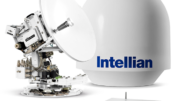Being as this is a blog that appeals to DIYers, I get this question a lot. I’ve lost count of how many times. The answer tends to be an easy one, but not something that people really want to hear.
You can’t do that.
I know it might be tempting to open up that DIRECTV receiver and put in a bigger hard drive, swap out the power supply, or otherwise tinker with it, but you can’t do that (in most cases.)
If you’re using DIRECTV at home, your receiver is leased. It isn’t your property, and unlike an apartment or car that you lease, you can’t even make minor changes. You have to keep it exactly as is. This may seem like a real drag if you’re trying to do something like deal with a noisy fan or loud hard drive, but it’s what you signed up for.
Truth is there isn’t much in there that you would really want to replace. The hard drives in today’s Genies are really big enough for virtually any need. The power supplies are external. There’s nothing really modular in there now.
I know it wasn’t always like that. In the early DIRECTV days I myself cracked open a few receivers that had prematurely blown capacitors. But that was way back when you actually bought the things in stores and you were on the hook for them.
What about commercial customers?
If you’re a commercial customer, in most cases you’ve bought the hardware and you own it. Unfortunately this doesn’t always mean you can do what you want. You may be free to make modifications but then the receiver may not work. Even something fairly benign may make this fairly complex computer think it’s been tampered with, and tampering is something DIRECTV simply doesn’t want.
If you do try to make changes to an owned receiver, the most common outcome is that it won’t work. The second most common outcome is that it won’t work any better than it did. It’s just not worth the time.
Why is this?
Blame the content protection scheme built into every program on DIRECTV. It’s designed to make the TV networks comfortable by making it almost impossible for you to get a perfect, unencrypted high-definition copy of the programs you receive. If you could do that, you would be able to rebroadcast them illegally and that would undercut the whole system where DIRECTV pays the networks and the networks get rich. This content protection scheme, and the companies that require it, are the reason that DIRECTV’s streaming products aren’t as robust as their satellite products. I do believe that’s changing, but for most people (me included) it can’t change fast enough.
Here’s what to do instead
If you do want to make a change to your DIRECTV system — for example to make it work better on your boat, or to add more hard drive space — you’re much better off making that change using something external instead of digging into the guts of your receiver. It may not be the “environmental” answer but more often than not the solution is simply swapping out the box. And, whether you’re a residential or commercial customer, there’s one easy way to do that.
Call the experts at Solid Signal. We can help you figure out your next steps. We’re DIRECTV’s dealer of the year, and we’re here to give you the best possible customer service. Call us at 888-233-7563 during East Coast business hours. If it’s after hours, fill out the form below. We’ll get back to you, usually within one business day.





